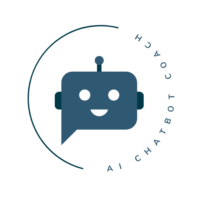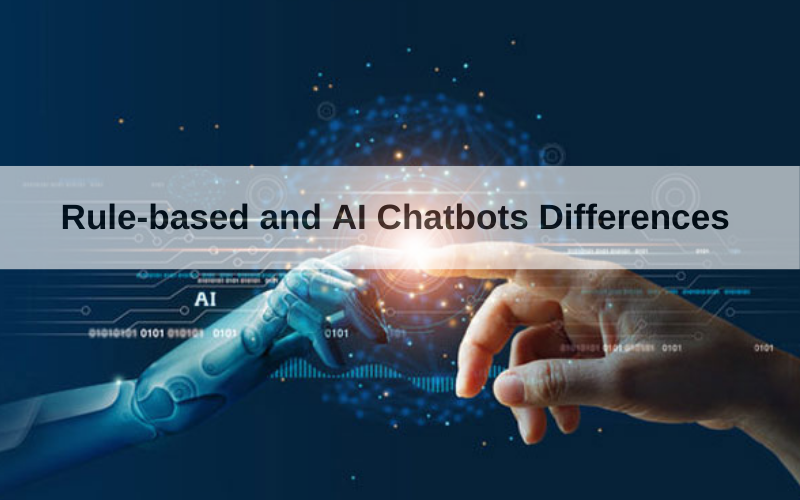In the digital age, chatbots have become an essential part of customer interaction. Businesses are increasingly adopting them to streamline their services, offering support, answering questions, and even guiding users through complex processes. However, chatbots come in different forms, with Rule-based chatbots and AI chatbots being the two most common types. While both serve the purpose of improving customer experience, they do so in very different ways. Understanding the key differences between these two types of chatbots can help businesses make the right choice based on their needs and goals. Let’s dive into these differences and explore how these two types of chatbots function.
What Are AI Chatbots?

On the other hand, AI chatbots use more sophisticated technologies to carry out interactions. Powered by artificial intelligence, these chatbots go beyond simple rule-based functions and are able to understand and process natural language, making them far more flexible and dynamic. AI chatbots leverage technologies like Natural Language Processing (NLP) to interpret the intent behind a user’s input, even if it’s phrased differently or includes complex sentences.
Unlike Rule-based chatbots, AI chatbots do not require pre-programmed responses for every possible question. Instead, they are able to learn from past interactions and improve over time. This ability to learn from data and adapt to new information makes them far more capable in handling a wide variety of customer inquiries. AI chatbots can process various forms of input and provide intelligent, context-aware responses, offering a more conversational and human-like interaction.
Technology Behind Rule-based Chatbots
The core of a Rule-based chatbot lies in its technology, which is quite simple but highly effective in certain situations. Rule-based chatbots work based on hard-coded rules that follow specific logic.
Key technologies behind Rule-based chatbots include:
- Decision Trees: The chatbot is programmed to follow a set of pre-determined paths depending on the user’s input.
- Keyword Matching: The chatbot searches for specific keywords in the user’s message to identify the appropriate response.
- If-then Logic: The interaction is governed by conditional statements that only allow certain responses to specific inputs.
Technology Behind AI Chatbots
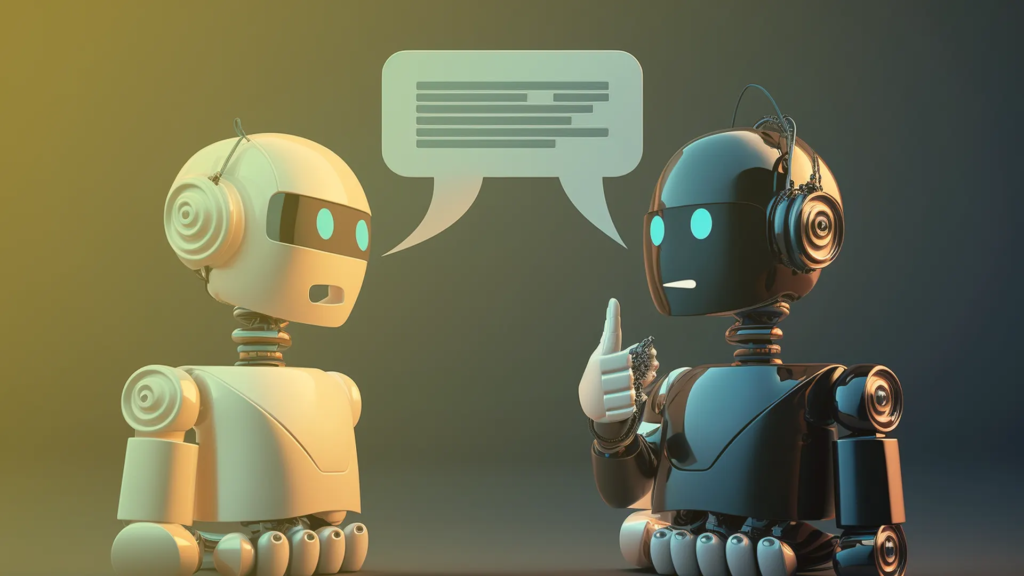
On the other hand, AI chatbots operate using more advanced technologies that give them an edge in flexibility and adaptability.
The primary technologies powering AI chatbots are:
- Natural Language Processing (NLP): This technology helps AI chatbots understand the user’s language, even if it’s not perfectly structured. It enables the chatbot to interpret slang, idioms, and informal speech.
- Machine Learning: AI chatbots use machine learning algorithms to improve their responses based on past conversations. This allows the chatbot to become more intelligent over time.
- Deep Learning: Advanced AI chatbots utilize deep learning techniques, where the system analyzes massive datasets to make more nuanced decisions, making it capable of understanding context.
Customization and Flexibility
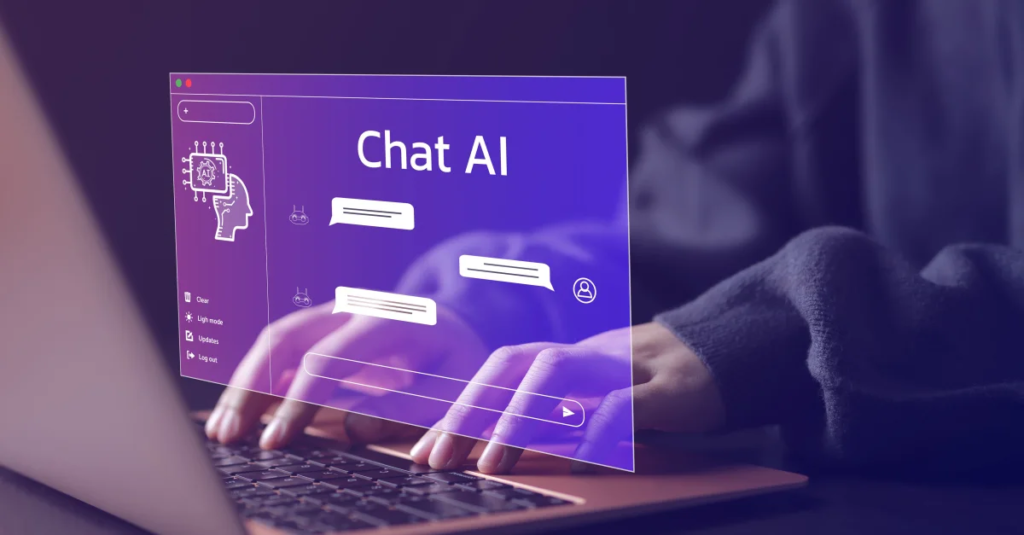
When it comes to customization, there is a stark difference between Rule-based chatbots and AI chatbots. Rule-based chatbots are limited in their customization capabilities because they rely heavily on predefined rules. While it’s possible to create a variety of decision trees and add new paths, this process can be time-consuming and inflexible. For example, if a business wants to add a new feature or capability to the chatbot, it requires a manual update to the logic, which may involve altering existing scripts and decision trees.
In contrast, AI chatbots offer much greater flexibility and adaptability. Since these chatbots can learn and process natural language, they can be adjusted to handle new types of interactions without the need for manual updates. Additionally, they are often able to personalize the conversation based on user behavior or historical data, making the interaction feel more tailored and specific to the user’s needs. For example, an AI chatbot online might remember a user’s previous purchases or preferences and suggest relevant products based on this information, offering a personalized experience that Rule-based chatbots cannot match.
- Rule-based chatbots are limited in their customization. Since they rely on predefined responses, they can only handle questions or inputs that fit into the programmed paths. If a user asks something unexpected, the chatbot might fail to provide an answer.
- AI chatbots, on the other hand, are highly flexible. They don’t need to be explicitly programmed for every potential scenario. As AI chatbots learn from user interactions, they become increasingly adept at handling a wide range of queries. This makes them better suited for dynamic and unpredictable conversations.
Learning and Adaptability
One of the most significant advantages of AI chatbots over Rule-based ones is their ability to learn from previous interactions. AI chatbots can process data from past conversations and use that information to improve future interactions. This means that over time, the chatbot can become more accurate in its responses, offering better support and recommendations to users.
In contrast, Rule-based chatbots do not have the ability to learn. Once a decision tree is set up, the chatbot can only provide responses based on that structure. If a user asks a question that the chatbot isn’t programmed to handle, it won’t be able to adapt or offer an appropriate answer. This means that AI chatbots are far more suited for businesses that experience a higher volume of varied customer inquiries.
Handling Complex Queries

Rule-based chatbots are great for handling simple, straightforward inquiries, but they struggle when it comes to complex or vague questions.
How do these two types handle complex queries?
- Rule-based chatbots: If a user asks something outside the defined script, the chatbot is unable to provide a meaningful response. For example, if a user asks, “Can I change my shipping address after placing the order?” the chatbot might not know how to answer unless it has been programmed to handle that specific situation.
- AI chatbots: AI chatbots are much better at handling complex queries. Due to their machine learning capabilities, they can process a wider range of questions and provide more relevant, context-based responses.
User Experience and Interaction Quality
The user experience with AI chatbots tends to be far superior to that of Rule-based chatbots. Because AI chatbots can process natural language and learn from interactions, they provide a more conversational, personalized experience. These chatbots are capable of understanding context, making the interaction feel more natural and less robotic. Users are more likely to feel that they are conversing with an intelligent system, rather than just following a series of options.
On the other hand, Rule-based chatbots often feel rigid and impersonal. The limited range of responses can make the interaction feel mechanical, and users may get frustrated if the chatbot doesn’t understand their questions or provide useful answers. With AI chatbots, users can engage in meaningful conversations, improving satisfaction and increasing the likelihood that the interaction will resolve their issue effectively.
Cost and Maintenance
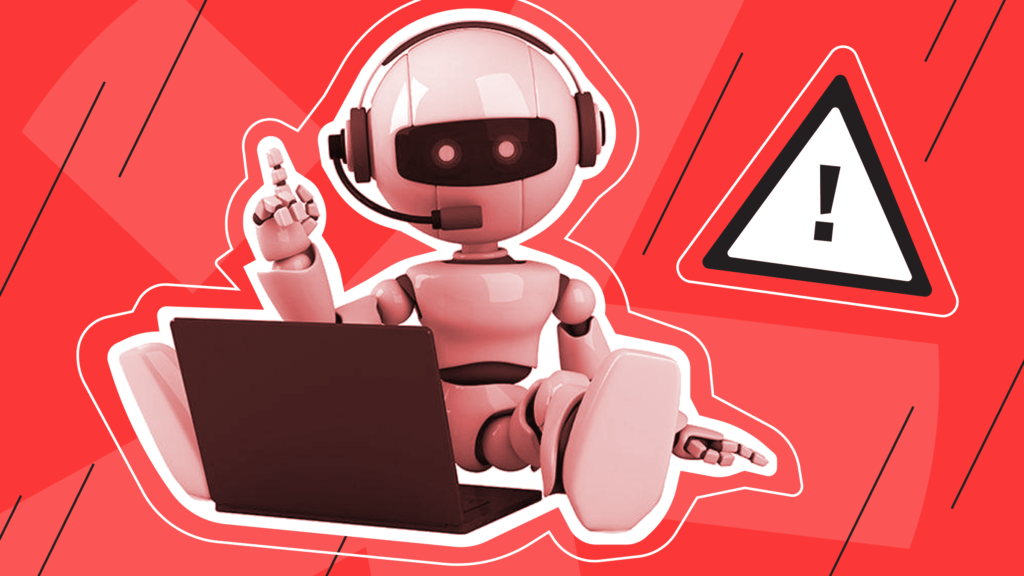
When considering which chatbot to use, businesses must also take into account the cost and maintenance associated with each type. Rule-based chatbots are generally less expensive to develop and maintain because they don’t require advanced technologies like machine learning or Natural Language Processing. The cost of building and updating these chatbots is lower since they rely on predefined rules and decision trees.
In contrast, AI chatbots tend to be more costly to develop due to the complexity of the underlying technologies. They require more advanced programming and often need to be trained on large datasets to improve their performance. Additionally, maintenance costs may be higher, as the chatbot needs to be regularly updated to ensure it remains effective.
Use Cases for Rule-based and AI Chatbots
Both types of chatbots have their strengths and ideal use cases. Let’s take a look at where each one excels:
Rule-based chatbots:
- Simple tasks, like answering frequently asked questions (FAQs)
- Order status updates where responses are predictable
- Appointment scheduling with fixed times
AI chatbots:
- Handling complex customer service inquiries that require context
- Personalizing experiences for customers based on their behavior
- Providing support for a variety of services, including sales, troubleshooting, and product recommendations
Conclusion

When choosing between Rule-based chatbots and AI chatbots, it’s essential to consider the complexity of your customer interactions and your business needs. AI chatbots are better suited for businesses that want to provide dynamic, personalized customer service, while Rule-based chatbots work well for straightforward tasks and limited interactions.
Whether you opt for a chat with AI or decide to implement a simpler rule-based chatbot, it’s clear that these technologies are transforming the way businesses engage with customers. As AI chatbot technology continues to improve, we can expect even more sophisticated and engaging experiences in the future, making online talking with AI the go-to solution for customer support across industries.
Ready to Build an AI Chatbot That Grows With Your Startup?
At AI Chatbots Coach, we help startups turn ambitious ideas into smart, scalable AI chatbot solutions. Whether you’re building an AI chatbot to support customer service, automate tasks, or provide a personalized experience, we guide you through every step—no tech background needed.
From MVP to market-ready, we help startups like yours leverage conversational AI to stand out. Let your chatbot become a lean, efficient part of your growth strategy.
Start building smarter at aichatbots.coach.
FAQs
1. What is the main difference between AI chatbots and rule-based chatbots?
The biggest difference between AI chatbots and rule-based chatbots is how they understand and respond to people. Rule-based chatbots follow a script. They use simple rules, like “if a user says X, respond with Y.” These bots can only answer questions they’ve been specifically programmed for. If you ask something unexpected, they often get stuck.
AI chatbots, on the other hand, use artificial intelligence and natural language processing (NLP). This means they can understand everyday language, even if it’s complex or messy. They don’t need exact keywords or scripts. AI chatbots learn from previous chats, so they get smarter and more helpful over time. They’re better at holding real conversations and solving tricky problems.
If your business has simple questions, a rule-based chatbot might work. But if your customers ask lots of different or complex questions, an AI chatbot is usually the better choice.
2. Are AI chatbots better for customer support than rule-based chatbots?
Yes, AI chatbots are generally better for customer support, especially when customers ask detailed or unpredictable questions. These chatbots can understand natural language and even learn from past conversations, which helps them respond more like a real person. They use technologies like machine learning and NLP to understand intent and give smarter answers.
Rule-based chatbots work well for simple customer service tasks, like checking order status or booking appointments. But they can struggle when customers ask something that doesn’t match their programmed rules.
For example, if someone says, “My package never arrived, what do I do?” an AI chatbot can understand the problem and offer help. A rule-based chatbot might not recognize the request unless it was typed a specific way.
So, if you want fast, personalized, and scalable support, AI chatbots are the better option. They offer a more natural and helpful experience, which can make customers happier.
3. Do AI chatbots cost more than rule-based chatbots
Yes, AI chatbots usually cost more upfront than rule-based chatbots, but they offer greater long-term value. That’s because AI chatbots use advanced technology like machine learning and natural language processing. They also need to be trained with lots of data and maintained regularly to stay smart and useful.
Rule-based chatbots are cheaper to build and maintain. Since they use simple decision trees and keywords, they don’t require much technical work or data. But they’re limited in what they can do.
If your business only needs a chatbot for basic questions or fixed tasks, a rule-based option is budget-friendly. But if you want a bot that can handle many types of conversations and improve over time, investing in an AI chatbot can save time and improve customer satisfaction in the long run.
Think of it like buying a basic calculator versus a smartphone. The calculator is cheaper, but the smartphone does way more.
4. Can AI chatbots learn and improve over time?
Absolutely. One of the best things about AI chatbots is their ability to learn and improve the more they interact with users. They use machine learning, which means they look at past conversations to understand what worked well and what didn’t. Over time, they get better at answering questions, making suggestions, and solving problems.
This learning ability makes AI chatbots super helpful for businesses with a lot of customer interactions. As more people use the chatbot, it gathers data and becomes smarter. It can even start to personalize conversations—like remembering a user’s name or past orders.
Rule-based chatbots can’t do this. They only follow the rules they were given. If you want to add new features, you have to rewrite the script manually.
So, if you’re looking for a smart chatbot that grows with your business, AI is the way to go. It adapts, learns, and gives users a better experience every time they interact.
